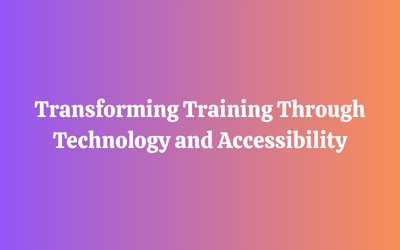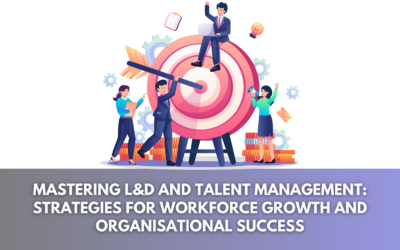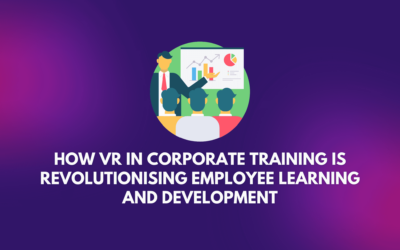Learning and Development Strategies Examples
Learning and Development Strategies Examples
Here are learning and development strategies examples to inspire your own.
In today’s dynamic business environment, a learning and development (L&D) plan is essential for a company to achieve long-term success and growth.
Many firms start implementing L&D strategies but struggle with execution or planning.
Fortunately, we’ve assembled all the information you require regarding learning and development initiatives, what makes them effective, and actually successful Learning and Development Strategies Examples & L&D tactics in action.
What Do Learning and Development Strategies Aim to Achieve?
By putting money into the skills, knowledge, and talents of its staff, a company can match its corporate training with its long-term business goals by using learning and development (L&D) initiatives.
The company invests in the growth of its personnel, and the employee, in turn, increases the company’s worth.
While L&D may fall under the purview of an organization’s Human Resources (HR) division, many businesses today have positions reserved especially for L&D specialists. One of several trends in learning and development is this.
They are in charge of helping employees develop the necessary abilities or talents an organization requires, whether they fall under the purview of HR or L&D professionals. They are responsible for developing, organizing, carrying out, and directing the company’s Learning and Development strategies examples.
In light of this, immediate supervisors must take the initiative to learn about their staff members’ personal development objectives. By suggesting L&D programs that might be a suitable fit for their team members, managers may act as champions for the learning and development of their workers.
Each employee should also be responsible for their growth and learning. The finest learning opportunities for each employee should be identified, and they should be actively sought out and applied for.
Workers that take part in L&D programs are more engaged and motivated as well as better able to contribute value to the business. More of today’s top talent is attracted to and retained by companies with effective L&D programs.
Strategies for Learning and Growth Within a Framework
While drafting a learning and development strategy, don’t start from scratch. Use the frameworks developed by top businesses and consulting organizations instead, who have already put in the time and effort to research what is effective. A framework makes ensuring that resources are used appropriately and in the proper places.
1. Compliance with corporate objectives
Aligning oneself with the broader goals, strategies, and talent makeup of the organization is one of the main objectives of a good L&D plan. The L&D plan selected will support the company’s talent’s professional development and competencies in a time- and money-efficient manner.
Several firms assist in the execution of their business plan with their L&D activities. For example, if a company’s business plan calls for a digital transformation, L&D will concentrate on developing the essential human capital.
2. Shared ownership between HR and business units
Governance models where business and HR leadership share ownership and responsibility for capability-building activities are most advantageous for L&D plans.
Because technology is constantly changing, businesses need to be adaptable and nimble.
As the need arises, L&D strategies should be prepared to quickly start capability-building projects. For example, a training program can be quickly developed and put into place if a sudden requirement for employees educated in cloud-based collaboration tools arises.
The top digital transformation companies can improve their workforce’s skills, knowledge, and abilities to successfully navigate the constantly changing digital landscape, stay competitive, and satisfy the needs of their clients and customers by adopting a framework for Learning and Development Strategies that includes a thorough assessment of capability gaps and estimated value.
3. An evaluation of capability shortages and a value estimate
An organization must determine its business priorities, even though this is easier said than done.
When evaluating their organization’s current capabilities, successful firms adopt a careful and methodical approach. This method is fundamentally a competency model based on the strategic direction of the firm.
As an illustration, “expertise in data visualization and predictive forecasting” might be a critical capability for a SaaS company.
4. Learning journey design
Learning Journeys, which comprise L&D interventions including pre- and post-classroom learning, digital learning, fieldwork, social learning, workshops, and on-the-job mentoring, are replacing traditional learning programs (such as those that take place in a classroom for a brief period).
A learning journey’s principal objective is to facilitate the efficient development of necessary new abilities and competencies.
5. Performance and scale-up
Execution is key when it comes to L&D plans. especially if you want to maintain support from stakeholders and stay on schedule and within budget.
Have a constant dialogue with stakeholders and begin small if you want to be sure you have the backing and funding of the leadership.
How can you begin modestly? Before focusing on the entire business, target a small pilot’s audience.
When a program is implemented across the entire organization, a modest pilot that is carried out well can have a significant influence. Since economies of scale are benefited from the L&D tactics, the program’s cost per participant decreases.
6. Impact on company performance measurement
Key Performance Indicators should be used to evaluate the success of an L&D plan (KPIs).
Depending on priorities, needs, and indicators required to make data-driven decisions, a business may monitor a variety of KPIs.
Indicators that look for three categories are often a good idea:
- Commercial Excellence (how closely aligned all L&D initiatives and investments are with business priorities).
- Excellence in Learning (the extent to which learning interventions alter behavior and performance).
- Excellence in Operations (how well investments and resources in the corporate academy are used).
The most effective organizations concentrate on outcome-based indicators, like:
- Individual accomplishment
- Worker involvement
- a cohesive team
- Streamlining business processes
7. Including L&D initiatives in HR procedures
Many L&D plans are unrelated to yearly performance evaluations.
Leaders in L&D must cooperate with HR leaders and be familiar with the key HR management processes. The greatest L&D strategies incorporate performance review development feedback into their capability-building concepts.
Companies are also increasingly substituting more frequent feedback for annual performance assessments.
8. Using the 70:20:10 learning model
The 70:20:10 learning framework states that 70% of learning occurs at work, 20% occurs through contact and cooperation, and the remaining 10% occurs through formally structured learning interventions, such as in-person or online training.
These ratios are merely broad guidelines that change based on the needs of the business and the industry.
9. Applications for systems and learning technology
The majority of educational technology now runs on cloud-based platforms. By doing this, you may access the most cutting-edge tools and almost limitless alternatives for trying out various systems without having to invest a lot of time and money in setting up actual systems.
What Determines the Effectiveness of a Learning and Development Strategy?
The success of learning and development initiatives can be attributed to several factors. We’ll talk about the most crucial elements.
1. Related to business objectives
An L&D strategy encourages employee development so that they can contribute to the organization’s progress. Because of this, an L&D plan that is in line with the general objectives of the company can better prioritize the skills required to achieve those particular objectives.
2. Provides Workers with Customized Learning
As not everyone learns in the same way, it’s crucial to provide learning opportunities that take into account each employee’s particular needs and learning preferences. L&D methods are more effective when employees are encouraged and given the tools they need to grow.
Hence, while developing learning and development plans, it’s important to strike a balance between helping people achieve their goals and developing the capabilities the organization needs.
3. Social learning
The most efficient way we learn is through social learning, which involves seeing, imitating, and receiving feedback from our peers. Include social learning in the routines of your employees, whether it is through group projects, problem-solving, or other activities.
Raise the Bar on Your Learning and Development Plan
Investing in an L&D plan has the potential to yield both immediate and long-term rewards. Making sure that the L&D plan is in line with the organization’s overarching business objectives is crucial.
Employees learn in a group setting through social learning, which is one component of an effective L&D approach. This can be done in the classroom through structured cohorts, group projects, collaboration, or even brainstorming sessions. Providing incentives for employees to coach and mentor one another is a great method to build up crucial organizational competencies.
Stratbeans is aware of the profound effects that effective mentoring can have on both the mentor and the mentee. By mentoring, Stratbeans assists businesses in advancing their learning and development plans to meet organizational and commercial objectives. Use Stratbeans to advance your L&D.
Learn More
Our News
- AI
- Animations
- Articulate
- Articulate 360
- Articulate Engage
- Articulate Live
- Articulate Presenter
- Articulate Quizmaker
- Articulate Replay
- Articulate Review
- Articulate Storyline
- Articulate Storyline 3
- Articulate Studio
- bite sized learning
- Characters
- Content Library
- Corporate Communication
- E-Learning
- e-Learning Authoring Tools
- Employee Engagement
- Game-Based Learning
- Gamification
- Gamiflexer
- Go Sales
- Healthcare
- Instructional Design
- Interactivity
- Knowledge Transfer
- L&D Trends
- Learning
- Learning & Development
- Learning Experience platform
- Learning Management System
- LMS
- LXP
- Microlearning
- mLearning
- Mobile Learning
- Nugget Learning
- Online Training
- Peek
- Performance Support
- Preso
- Quiz and Assessment Platform
- Replay 360
- Rise
- SCORM
- Screen Capture
- Software
- Storyline 360
- Studio 360
- Training Management
- Trainings
- Uncategorized




